Cost effectiveness and resource allocation of Plasmodium falciparum malaria control in Myanmar: a modelling analysis of bed nets and community health workers
- PMID: 26416075
- PMCID: PMC4587798
- DOI: 10.1186/s12936-015-0886-x
Cost effectiveness and resource allocation of Plasmodium falciparum malaria control in Myanmar: a modelling analysis of bed nets and community health workers
Abstract
Background: Funding for malaria control and elimination in Myanmar has increased markedly in recent years. While there are various malaria control tools currently available, two interventions receive the majority of malaria control funding in Myanmar: (1) insecticide-treated bed nets and (2) early diagnosis and treatment through malaria community health workers. This study aims to provide practical recommendations on how to maximize impact from investment in these interventions.
Methods: A simple decision tree is used to model intervention costs and effects in terms of years of life lost. The evaluation is from the perspective of the service provider and costs and effects are calculated in line with standard methodology. Sensitivity and scenario analysis are undertaken to identify key drivers of cost effectiveness. Standard cost effectiveness analysis is then extended via a spatially explicit resource allocation model.
Findings: Community health workers have the potential for high impact on malaria, particularly where there are few alternatives to access malaria treatment, but are relatively costly. Insecticide-treated bed nets are comparatively inexpensive and modestly effective in Myanmar, representing a low risk but modest return intervention. Unlike some healthcare interventions, bed nets and community health workers are not mutually exclusive nor are they necessarily at their most efficient when universally applied. Modelled resource allocation scenarios highlight that in this case there is no "one size fits all" cost effectiveness result. Health gains will be maximized by effective targeting of both interventions.
Figures
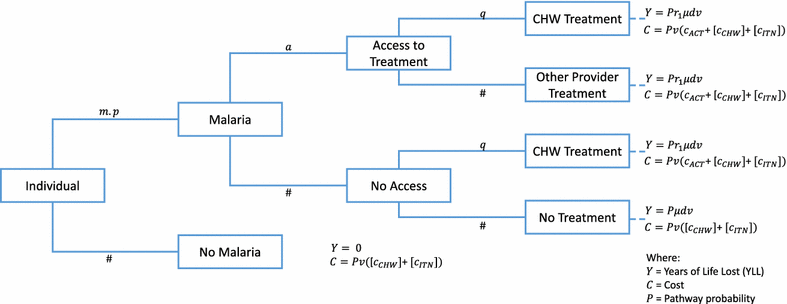
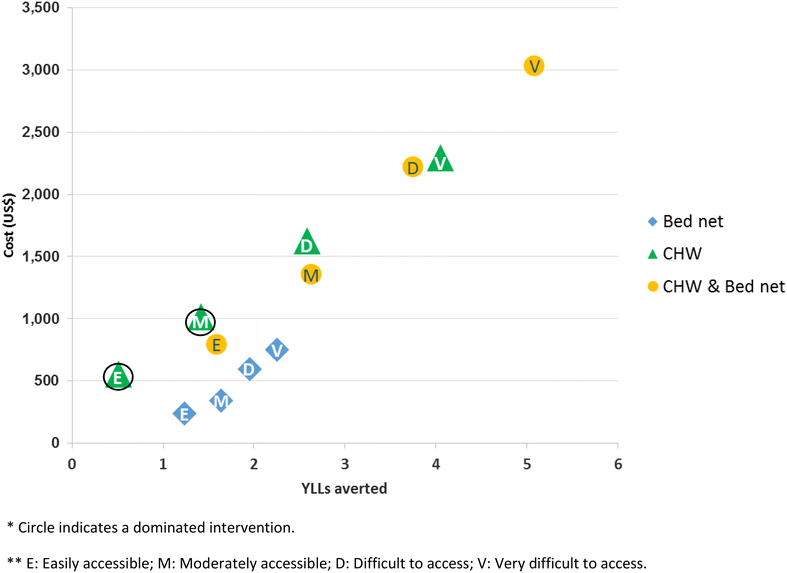
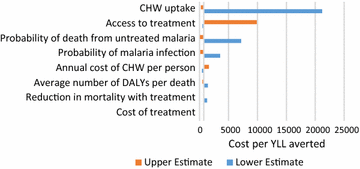
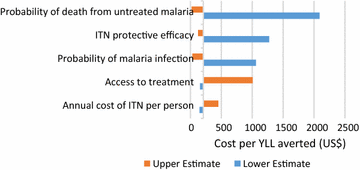
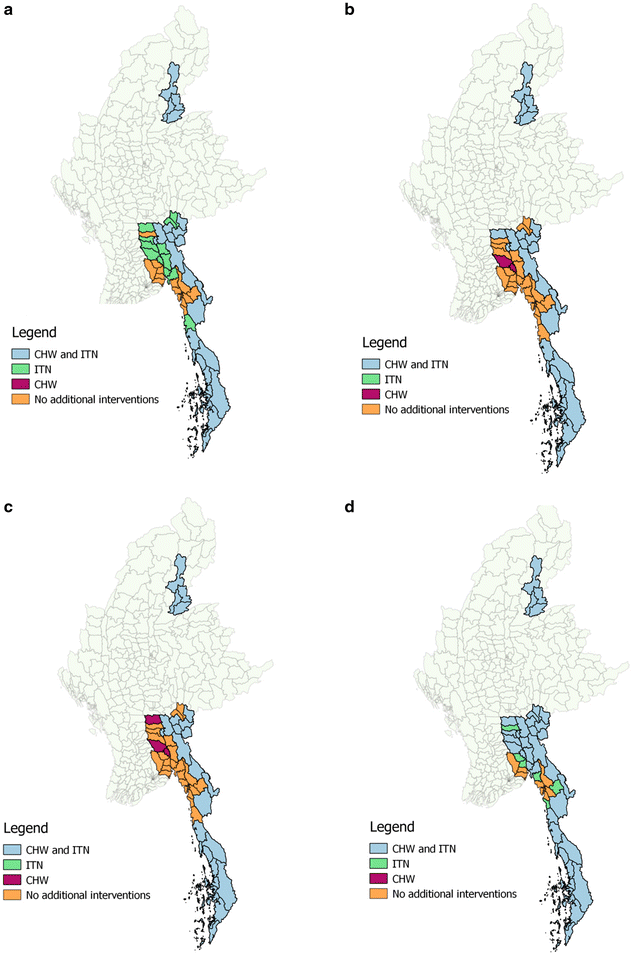
References
-
- WHO . World Malaria Report. Geneva: World Health Organization; 2013.
-
- Smithuis FM, Kyaw MK, Phe UO, van der Broek I, Katterman N, Rogers C, et al. The effect of insecticide-treated bed nets on the incidence and prevalence of malaria in children in an area of unstable seasonal transmission in western Myanmar. Malar J. 2013;12:363. doi: 10.1186/1475-2875-12-363. - DOI - PMC - PubMed
Publication types
MeSH terms
Grants and funding
LinkOut - more resources
Full Text Sources
Other Literature Sources

